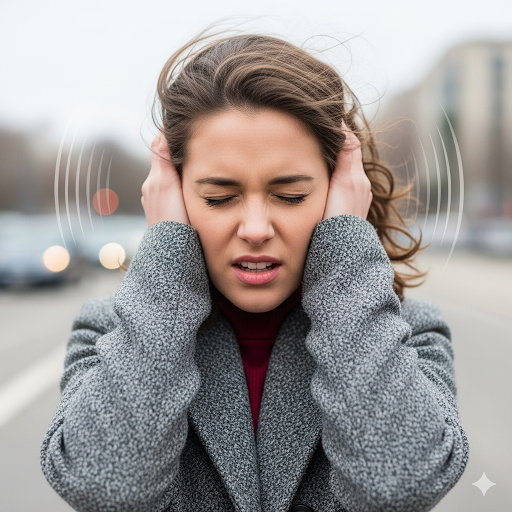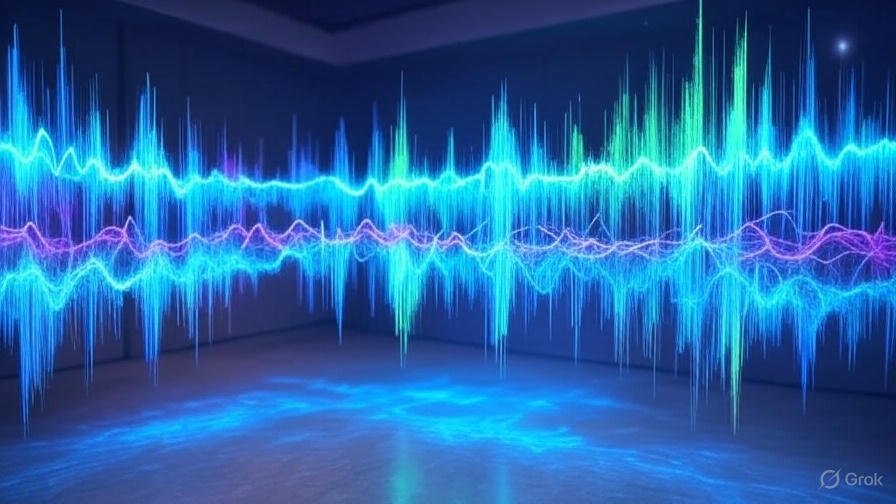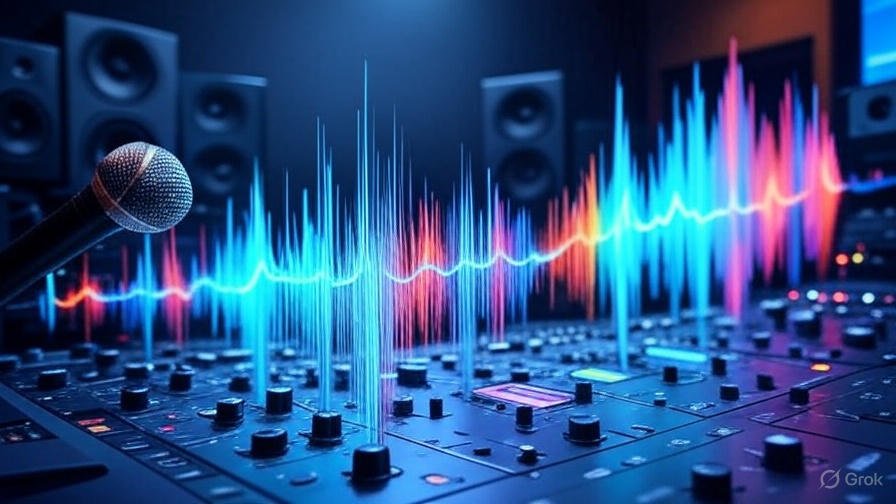The sound of fingernails scraping down a chalkboard. Someone chewing with their mouth open. The repetitive clicking of a pen. For most people, these sounds are mildly annoying. But for others, they trigger an intense, almost violent physical reaction that can include rage, panic, and an overwhelming urge to escape.
Welcome to the bizarre world of misophonia, where everyday sounds become acoustic torture. This isn't simply being sensitive to loud noises or having good hearing. It's a neurological condition that transforms common sounds into triggers for fight-or-flight responses so intense they can derail entire days.
What makes certain sounds so unbearably irritating while others barely register? The answer lies in the complex interplay between our ears, brain, and evolutionary survival instincts—a system that sometimes goes haywire in fascinating and disturbing ways.
What Is Misophonia and Why Does It Happen?

Misophonia affects 6-20% of the population to varying degrees
Misophonia, literally meaning "hatred of sound," is a neurological disorder where specific sounds trigger intense emotional and physiological reactions. Unlike hyperacusis (sensitivity to loud sounds), misophonia responds to the type of sound rather than its volume.
The condition typically develops in childhood or adolescence and tends to worsen with age. Common triggers include eating sounds, breathing noises, repetitive movements, and certain consonants or vocal patterns.
What makes misophonia particularly challenging is that trigger sounds are usually produced by other people, creating significant social and relationship difficulties for sufferers.
The Most Common Sound Triggers
While trigger sounds vary between individuals, certain categories consistently provoke intense reactions across the misophonic population:
Eating Sounds
Chewing, slurping, swallowing, crunching—mouth sounds are the most universally triggering category. The wet, repetitive nature activates disgust responses linked to contamination fears.
Breathing Sounds
Heavy breathing, sniffling, throat clearing, and nose whistling trigger hypervigilance because they suggest illness, distress, or invasion of personal space.
Repetitive Sounds
Pen clicking, foot tapping, keyboard typing—repetitive sounds can induce anxiety because unpredictable patterns suggest lack of control in the environment.
Vocal Sounds
Lip smacking, "s" sounds, vocal fry, uptalk—certain vocal patterns trigger responses because they signal social dominance, weakness, or deception.
"It's not just annoying—it feels like the sound is crawling inside my brain and I have to get away or I'll lose control completely."
The Misophonia Response: Fight, Flight, or Freeze
When a misophonic person encounters a trigger sound, their brain launches an immediate crisis response that can include:
Physical Symptoms
- • Increased heart rate and blood pressure
- • Muscle tension and clenched jaw
- • Sweating and hot flashes
- • Nausea and digestive upset
- • Trembling or shaking
Emotional/Behavioral
- • Intense rage or panic
- • Urge to escape or attack
- • Verbal outbursts or aggression
- • Avoidance behaviors
- • Social isolation
The Neuroscience Behind Sound Sensitivity
Recent brain imaging studies have revealed the neurological mechanisms that make certain sounds so unbearable:
Abnormal Connectivity
Misophonic brains show increased connectivity between auditory cortex and limbic system, bypassing rational processing and triggering immediate emotional responses.
Hyperactive Amygdala
The brain's fear center shows excessive activation to trigger sounds, treating harmless noises as genuine threats requiring immediate defensive action.
Deficient Inhibition
Reduced activity in prefrontal cortex means less ability to consciously override or regulate the emotional response to trigger sounds.
Why Our Brains Evolved to Hate Certain Sounds
Sound sensitivity likely evolved as a survival mechanism, helping our ancestors detect threats and avoid contamination:
- Disease Avoidance: Wet mouth sounds signal illness or poor hygiene—potential sources of infection
- Threat Detection: Irregular breathing suggests predators, prey, or territorial competition
- Social Hierarchy: Repetitive sounds indicate obsessive behaviors that could destabilize group dynamics
- Hypervigilance: Sudden sensitivity to minor sounds helps detect approaching danger
- Mate Selection: Vocal patterns provide information about health, intelligence, and genetic fitness
The Chalkboard Effect: Why Some Sounds Are Universally Awful
Certain sounds trigger discomfort in almost everyone, not just those with misophonia. Scientists have identified specific acoustic properties that our brains find inherently disturbing:
Frequency Range
Sounds between 2,000-5,000 Hz are most irritating because this range corresponds to human screams and alarm calls—our most primal danger signals.
Harmonic Disruption
Irregular frequencies that don't follow natural harmonic patterns sound "wrong" to our pattern-seeking brains and trigger anxiety responses.

Irregular sound patterns disrupt our brain's predictive processing
Cultural and Personal Triggers
While some sound sensitivities appear universal, others are shaped by personal experiences and cultural background:
Learned Associations
Traumatic experiences can create permanent sound triggers. A car backfiring might forever sound like gunshots to trauma survivors.
Cultural Conditioning
Different cultures have varying tolerance for eating sounds, personal space, and vocal patterns, affecting what triggers discomfort.
Familial Patterns
Misophonia often runs in families, suggesting both genetic predisposition and learned hypervigilance behaviors.
Age and Development
Sound sensitivity typically begins in childhood, peaks in adolescence, and can evolve throughout life based on experiences.
Coping Strategies: Managing Sound Sensitivity
While there's no cure for misophonia, several strategies can help manage trigger responses:
Environmental Control
- • Use noise-canceling headphones or earplugs
- • Create background white noise or music
- • Position yourself strategically in social situations
- • Communicate boundaries with family and friends
Therapeutic Approaches
- • Cognitive behavioral therapy (CBT)
- • Tinnitus retraining therapy (TRT)
- • Mindfulness and relaxation techniques
- • Gradual exposure therapy
When Sound Sensitivity Becomes Debilitating
Severe misophonia can significantly impact quality of life, leading to:
- Social Isolation: Avoiding restaurants, movie theaters, and family gatherings
- Career Limitations: Difficulty in open offices or collaborative work environments
- Relationship Strain: Partners and family members may not understand the severity of reactions
- Educational Impact: Classroom sounds can make learning environments unbearable
- Mental Health: Depression and anxiety commonly co-occur with severe misophonia
The Future of Sound Sensitivity Research
Scientists are developing new treatments and technologies to help those with sound sensitivity:
Pharmaceutical Approaches
Researchers are testing medications that regulate neurotransmitter activity in auditory-limbic pathways to reduce trigger responses.
Smart Audio Devices
AI-powered hearing aids and earbuds that can identify and filter trigger sounds in real-time while preserving important audio.
Neurofeedback
Training programs that help individuals consciously regulate their brain's response to trigger sounds through real-time monitoring.
Understanding the Symphony of Sensitivity
The next time someone flinches at the sound of your chewing or seems irrationally angry at pen clicking, remember that their reaction isn't a character flaw or attention-seeking behavior. It's their nervous system responding to perceived threats with the same intensity as if facing genuine danger.
Sound sensitivity reveals the remarkable complexity of human perception and the ways our evolutionary past continues to shape our present experiences. What seems like an overreaction is actually an ancient survival mechanism working exactly as designed—just in an environment it wasn't designed for.
Whether you experience sound sensitivity yourself or live with someone who does, understanding the science behind these reactions can foster empathy and lead to better coping strategies. In a world full of increasingly complex acoustic environments, perhaps we all need to become more mindful of the sounds we create and the profound impact they can have on those around us.
